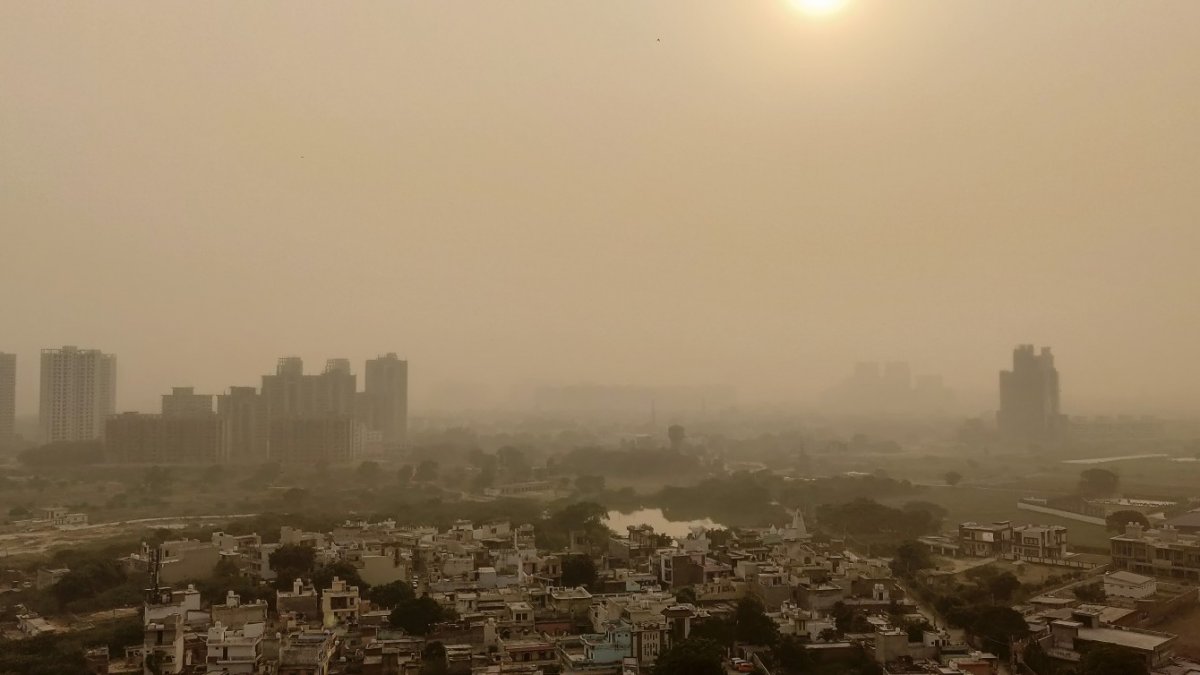Study produces a detailed chemical profile of Delhi’s air pollution sources
A new study has produced a comprehensive chemical analysis of the key air pollution sources in Delhi, India.

Exposure to air pollution causes around 1.1 million deaths per year across India – this problem is thought to be most severe in Delhi. The steady upswing in India's population and energy consumption is a significant factor in the air pollution problem: Delhi's population of 30 million contributes 15 times the World Health Organisation's recommended values of the annual average levels of the fine particulate matter (PM2.5).
In a study published by Chemosphere, the University of Surrey's Global Centre for Clean Air Research (GCARE), in collaboration with partners from the University of Birmingham, National Physical Laboratory, Delhi, and the Indian Institute of Technology Delhi monitored the chemical composition of five major air pollution sources – construction, road dust, solid waste burning, landfill fires, and crop residue burning.
The research team monitored each pollution area for carbon chemical species - organic carbon, elemental carbon and water-soluble ions -- plus other elements. The presence of metal elements is pivotal as they can damage human health and cause harm to the environment.
The GCARE researchers found that organic carbon matter was present in over 90 per cent of the air pollution sources monitored.
The team found the most elements in construction-based activities, discovering potassium, silicon, aluminium and calcium.
The team also discovered that organic carbon, chlorine and potassium were useful tracers for solid waste and crop burning - allowing future studies and decision-makers to pinpoint sources more accurately and assist them in formulating relevant countermeasures.
Professor Prashant Kumar, the corresponding author of the study and Founding Director of GCARE, said: "The ongoing fight against air pollution will need the most accurate information about the size and complexity of the problem we face. We are confident that the database of the chemical compositions of pollution in Delhi will be of great use to future researchers and the Indian government who are looking to develop effective countermeasures."
Professor Mukesh Khare, a co-author from the Indian Institute of Technology Delhi, said: "As India develops and we continue to see more people migrate to urban areas, air pollution will continue to be an issue. This study is a helpful contribution and a step in the right direction for ensuring that clean and safe air is a reality for the next generation of Indians."
Note to editors
A full description of the results can be found in the paper, ‘Chemical source profiles of fine particles for five different sources in Delhi’.
Previous work from the GCARE team evaluated the efficacy of odd-even trials in Delhi, highlighted key pollution challenges of land-locked Delhi and other Indian megacities and proposed mitigation strategies to tackle the issue, with recent work on a spatial distribution mapping method of pollutants across Delhi and COVID-19 lockdown impact on air quality in Indian cities.
The research is part of an international project, ‘An Integrated Study of Air Pollutant Sources in the Delhi and National Capital Region (ASAP-Delhi)’, funded by the Natural Environment Research Council, as part of the UK-India NERC-MOES Programme on Atmospheric Pollution and Human Health in an Indian Megacity (Delhi).
Reference
Hama, S., Kumar, P., Alam, M. S., Rooney, D. J., Bloss, W. J., Shi, Z., Harrison, R. M., Crilley, L. R., Khare, M., Gupta, S. K., 2021. Chemical source profiles of fine particles for five different sources in Delhi. Chemosphere, https://doi.org/10.1016/j.chemosphere.2021.129913.
Media Contacts
External Communications and PR team
Phone: +44 (0)1483 684380 / 688914 / 684378
Email: mediarelations@surrey.ac.uk
Out of hours: +44 (0)7773 479911
